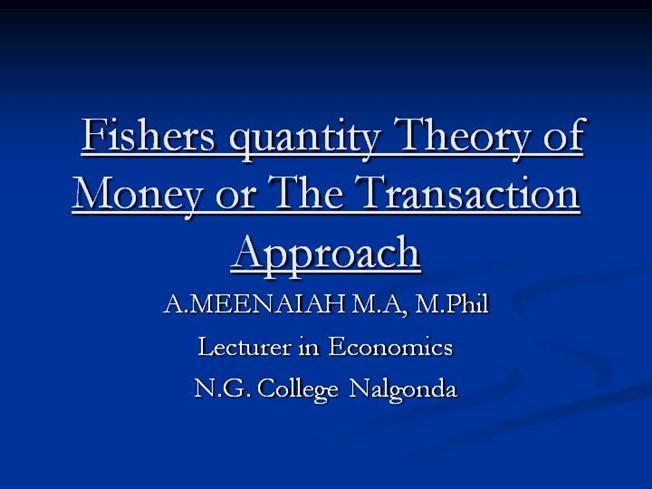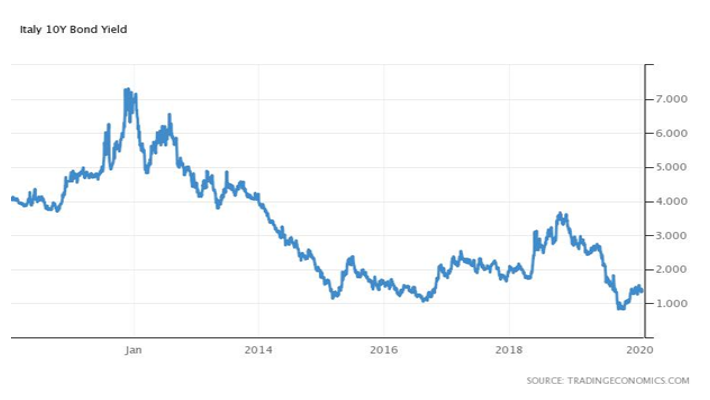Forex Trading
What Is Expense Ratio In Mutual Fund Meaning, Calculation and Importance Finschool By 5paisa
Contents:


These factors could include the time period for which you can invest before liquidating, the amount of money you can invest, the amount you require to secure the education fund, the level of risk you can take, and so on. When it comes to building an education fund, here are the top 5 types of mutual funds you can choose from. Large-cap mutual funds The defining characteristic of large-cap equity funds is the fact that these funds invest in the top 100 Indian companies that have the highest market value. Large-cap mutual funds can bring in impressive returns if you remain invested for a long period.
Investing in mutual funds for your child’s education is always advisable. First of all, it is a less stressful option than investing in direct equity stocks because that requires you to have in-depth knowledge of market trends and fluctuations. Secondly, with mutual funds, there are a variety of schemes you can opt for depending on a range of factors.
Expense Ratio
The expense ratio could be a significant deciding factor when choosing the best mutual fund. Higher expense ratios in mutual funds imply higher proportion of the returns being removed, thereby providing lower returns on investments. An investor should prudently analyse the expense ratio when deciding to invest in a mutual fund scheme because it has an impact on the annual returns generated by your portfolio. It is the cost allocated towards the payment of the individuals responsible for the smooth operation of a mutual fund. Fund managers devote their considerable time to making calculated predictions through rigorous market research so that they can generate optimum returns for respective investors.
Brokerage Charges for Mutual Funds: What are the Guidelines by … – INDmoney
Brokerage Charges for Mutual Funds: What are the Guidelines by ….
Posted: Mon, 03 Oct 2022 07:00:00 GMT [source]
is expense ratio charged every year expenses charged eat away a chunk of the actual returns of the fund. Higher expense ratio does not reflect the fund’s ability to create superior returns. Therefore, a higher TER does not guarantee better performance. The funds provided through TER are utilized to support the trading, legal, management fees, and other operating expenses. Direct costs are financial obligations of the fund directly attributable to the operation of the fund.
Suppose, funds pay the expenses at the end of the month, so the expenses will be calculated on the fund’s AUM at the end of the month. «KYC is one time exercise while dealing in securities markets – once KYC is done through a SEBI registered intermediary (broker, DP, Mutual Fund etc.), you need not undergo the same process again when you approach another intermediary.» An AMC incurs a lot of expenses for operating the fund, including costs related to maintaining records, providing customer support, and maintaining communication. A mutual fund can charge a maximum of 2.5 percent in India as per SEBI norms.
Operating expenses signify the cost incurred by AMC like distribution expenses, fund manager’s fees, etc. However there is no conflict on these services and commissions if any payable are in accordance of the extant regulations. You may receive from time to time, announcement about offers with intent to promote this Website and/or facilities/products of ABC Companies (“Promotional Offers”). The Promotional Offer would always be governed by these Terms of Use plus certain additional terms and conditions, if any prescribed. The said additional terms and conditions, if prescribed, would be specific to the corresponding Promotional Offer only and shall prevail over these Terms of Use, to the extent they may be in conflict with these Terms of Use. The Website reserves the right to withdraw, discontinue, modify, extend and suspend the Promotional Offer and the terms governing it, at its sole discretion.
tips to know before investing in US stocks
The fund house bears many expenses like the cost for daily operation, fees for fund managers, administrative expenses, etc. All these expenses are covered from the fund’s AUM and are called the expense ratio. This is applicable to cases where you invest in mutual funds through regular plans to compensate the broker for his services. We cannot cover the topic of expense ratios without touching on the differences between direct and regular plans of mutual funds. When people invest in mutual funds, they outsource money management – that is, they entrust a fund manager from a mutual fund company to manage their money for them.
In the former case , you would invest in what are called regular plans. In the case of doing it yourself, you would invest in what are called direct plans. The difference between the two plans is that when you invest in regular plans, the distributor gets paid a fraction of the expense ratio. With direct plans, since there is no distributor, that money does not get charged to the expense ratio. Mutual fund expense ratios are controlled or regulated by SEBI. One, SEBI specifies the maximum that each category of funds can charge.
What is expense ratio in a mutual fund
An expense ratio is a fee that a mutual fund or exchange-traded fund charges investors . This charge covers the costs of management, asset allocation, marketing, and other services. These fees calculation are done as a percentage of an investor’s annual cost.
You can find ‘TER of MF Scheme’ on the left side of the home page of the Association of Mutual Funds of India website (). The TER of each scheme can also be seen on the offer document of the particular scheme. But unfortunately the current structure of most of the funds creates the conflict of interests in services provided by all financial advising agencies and results in meager services to the customers.

Update your mobile number & email Id with your stock broker/depository participant and receive OTP directly from depository on your email id and/or mobile number to create pledge. Stock Brokers can accept securities as margin from clients only by way of pledge in the depository system w.e.f. September 1, 2020. Legal expenses may be incurred for meeting the various compliance requirements and processing paperwork related to stock certificates and filings. Let’s look at an example with an imaginary scheme – Prime Flexi Cap – with easy-to-use numbers.
It’s equally important to factor the mutual fund’s track record and the consistency of the profits delivered. A. The expense ratio is calculated on the fund’s total AUM at the time expenses are paid. In addition to the above, mutual fund companies have been allowed to charge up to 30 bps or 0.30% more, if at least 30% of their net inflows come from locations beyond the top 15 cities.
Expense Ratio is the cost paid to the AMC for the management of the fund. In case of the growth option, you choose not to opt for dividends. He has a price for his product and if you like the product at that price buy it. But to take expense ratio as the input for choosing the fund will be stupidity.
How do Expense Ratios Affect Your Returns?
Mutual Fund investment is fast gaining popularity among the salaried class, especially among those who have just begun their professional career. Since mutual fun allows to invest in monthly mode through SIP too, it becomes easier for the earning individual to invest in mutual funds. However, one should know that there is an expense ratio involved while investing in mutual fund schemes. In layman’s language, the expense ratio is a cut that every investor has to pay through the mutual fund houses annually. The fund house’s costs of hiring a fund manager are covered by the expense ratio. The allocation and management of funds are the sole responsibility of the fund manager.

The cost component for intermediaries is lesser for direct funds and higher for regular funds. As we said in earlier point there is no broker involved in direct funds whereas in Regular funds there are Brokers and Distributors involved. This can be depicted by the expense ratio formula, given by total expenses divided by total assets of the funds.
The Planner provides a generic indication of your money needs to enable you to prioritize your investment needs which are rule based. Therefore, the search results displayed by the Planner cannot be construed to be entirely accurate / comprehensive. Is owned by Aditya Birla Management Corporation Private Limited and the same is used herein under the License by Aditya Birla Capital Limited and its subsidiary companies (collectively hereinafter referred to as “ABC Companies”). Aditya Birla Capital Limited is the holding company of all financial services businesses. The information contained herein is generic in nature and is meant for educational purposes only. Nothing here is to be construed as an investment or financial or taxation advice nor to be considered as an invitation or solicitation or advertisement for any financial product.
It is difficult to get an accurate value of each of these costs. The total expense ratio or TER is the percentage of the invested sum that is deducted for annual charges by investment funds. The investor does not get any returns on the deducted TER but does on the remaining amount. The fund management charges for managing the investor’s assets. Thus, if you are investing in a mutual fund you cannot avoid the expense ratio. The Mutual Fund Expense Ratio is the fee charged by mutual fund firms or exchange traded fund .
The Facilities Provider, ABC Companies or any of its third party service providers and processor bank/merchants etc. shall not be deemed to have waived any of its/their rights or remedies hereunder, unless such waiver is in writing. No delay or omission on the part of Facilities Providers and ABC Companies, in exercising any rights or remedies shall operate as a waiver of such rights or remedies or any other rights or remedies. A waiver on any one occasion shall not be construed as a bar or waiver of any rights or remedies on future occasions. Your right to use the facilities is personal to you; therefore, you agree not to resell or make any commercial use of the facilities.
Expense ratio indicates the percentage of sales to the total individual expense or a group of costs. A lower rate means more profitability and a higher rate means lower profits. It becomes critical for schemes with comparatively more moderate yields. Apart from that, you may use expense ratio to differentiate between actively managed and passively managed funds.
Understanding Mutual Fund Expense Ratios – Yahoo Finance
Understanding Mutual Fund Expense Ratios.
Posted: Thu, 20 Jun 2019 07:00:00 GMT [source]
It is not the sole or even the most important criteria to base your fund choices on, but no fund choice should be made without considering it. Understanding how expense ratio works, how it is calculated, charged, and how to interpret returns in the context of expense ratios is something that investors need to know and be aware of to make informed decisions. As evident from the investment objective, ABC Fund will invest in large, mid and small-cap stocks thus providing diversification.
CreditMantri is India’s No. 1 site for Credit Analysis and Free Credit Score Online. Let us help you take control of your credit goals and unlock the door to your financial freedom. You can see on the left side of the home page of the Association of Mutual Funds of India website as well as the offer document for the scheme. The only issue there is the tracking part , the upside and downside becomes critical in case of direct equity .
Therefore, a small alteration in the expense ratio can levy a burden on annual returns earned. Similarly, a higher expense ratio will not imply that it is a suitable mutual fund. A fund with a lower mutual fund is equally capable of generating higher returns. As mentioned above, the expense ratio is higher for actively managed funds as more expenses are incurred in finding lucrative opportunities within the investment mandate. Additionally, expense ratios also differ across various asset classes.
However, this number includes a variety of costs and expenditures that the AMC incurs in managing the fund for its investors. In the USA, mutual funds are required to provide a top level break-up of the TER in the form of fund management fees, distribution fees, and other expenses. When Mutual Fund Companies impose the price on investors at the time of exit or redemption of the mutual fund units held it is called Loan Exit Load. If an investor leaves the fund within earlier before certain period of time he will have to pay exit charge. The number of withdrawals from the mutual fund scheme can also be limited by this charge.
- Expense ratios have a proportional impact on mutual fund returns.
- The effect of TER is amplified with a higher amount of investment.
- Therefore, it is wise to choose worthy mutual funds with a long-term approach to achieve your investment goals.
- The annual fee, meanwhile, is critical in debt funds where every paisa counts as they usually give a comparatively lower return.
- Mutual Fund A has an expense ratio of 1.00% and Mutual fund B has an expense ratio of 0.50%.
A lot of planning goes into choosing the right asset and constructing the portfolio, deciding the structure of the securities, the requirement of the collateral etc. That means for both regular and direct fund will be managing by fund manager, for which every investors in MF required to pay expense for fund management. Now, doubt arise is why should we pay agent/intermediator charges in case of regular plan in addition to expenses amount as fund manger for both plans manged by same person? As an investor we just buy and sell mutual funds, but in the background there are many expenses which a mutual fund (and even ULIP’s) has to incur. Some of which are; fund management fees, agent commissions, registrar fees, and selling and promoting expenses. As per SEBI regulations, the maximum expense ratio of an equity fund can be 2.5% and for a debt fund, it should not cross 2.25%.
Under Section 52 of the SEBI Mutual Fund Regulations, an asset management company can charge a maximum of 2.5% as the total expense ratio for the first Rs. 100 Crore of the portfolio value. For subsequent asset value of Rs. 300 Crore, a rate of maximum 2.25% is deductible, while 2% can be charged on subsequent slabs concerned with the rest of asset value. Since expense ratios levy a burden on annual returns earned, an investor should carefully analyse the same while choosing a mutual fund scheme to invest.
Legal/Audit fee – Mutual funds are governed by the Securities and Exchange Board of India, and hence, complying with all the regulations and laws, they need constant legal intervention and audits of their processes, schemes, etc. Any cost pertaining to audits, registration, and transfers, legal checks, etc., are also a part of the expense ratio. A Mutual Fund cannot change the investment objective of any of its scheme without prior approval from the trustees and informing the existing investors about the same. The investors are given a choice to exit the scheme without any charges within a specified period before the scheme’s investment objective can undergo a change. An expense ratio is the Total Expenses pertaining to a particular fund expressed in relation to the total money invested or asset base of the scheme. If the fund has an asset base of Rs 20 Lakh and the total fees is Rs 10 thousand in from the fund holders, then the expense ratio is 0.5%.
